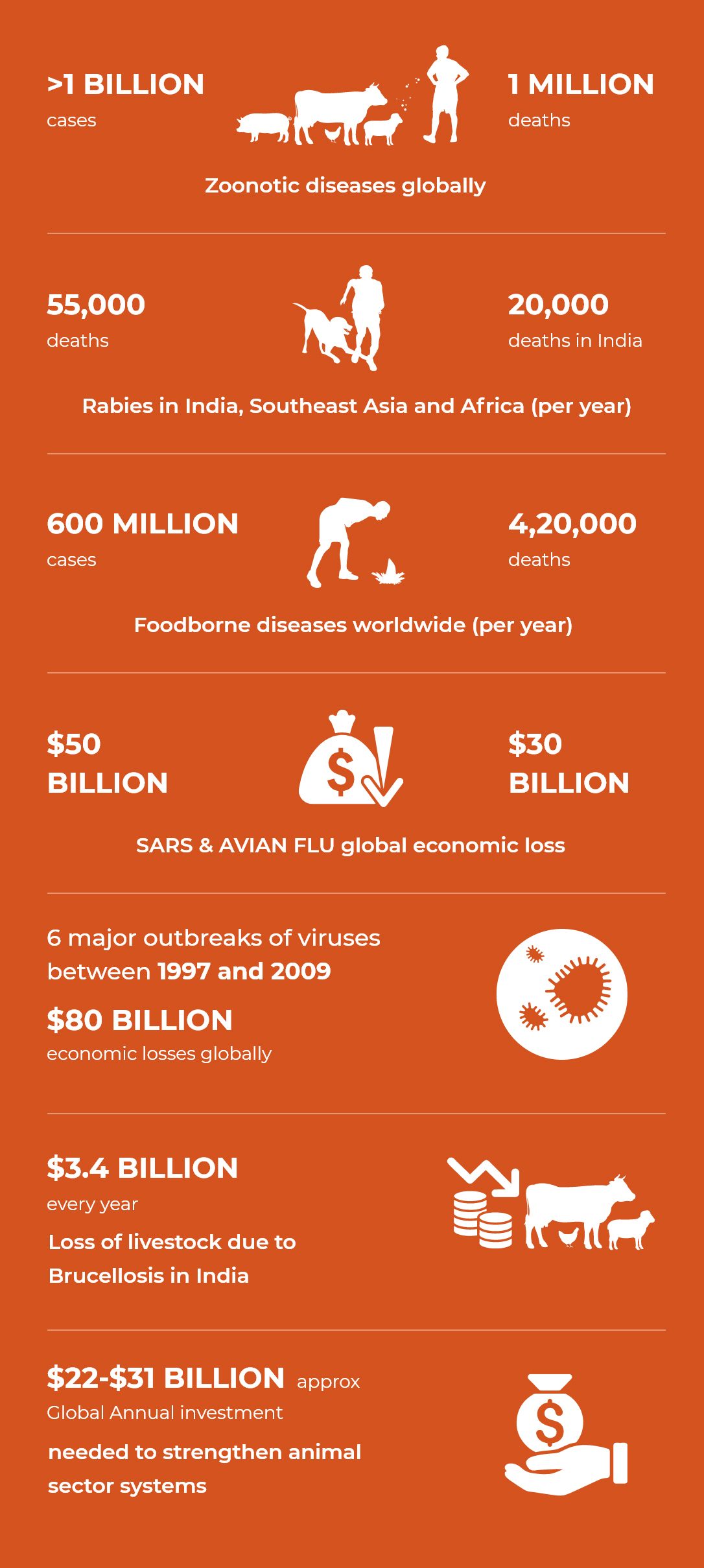One Health is an approach which recognizes that animal health, human health, and environment are inextricably connected.

Rabies

Brucellosis

Nipah

H1N1 Influenza

Anthrax
2/3
of infectious diseases affecting humans originate from animals
Diseases that spread between animals and people are called ‘zoonoses.’ Wild animals naturally carry many of the zoonotic diseases we see in people. These include Rabies, Nipah virus, Anthrax, Brucellosis, Avian & Swine flu, and COVID-19, to name a few. Most of the public health emergencies of international concern during the current millennium had wildlife as their natural reservoirs.







